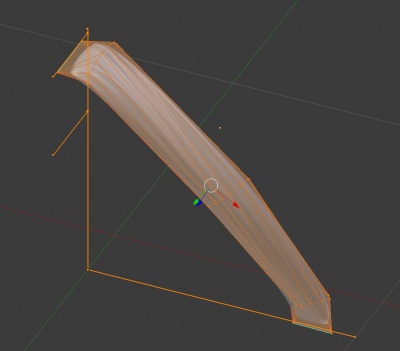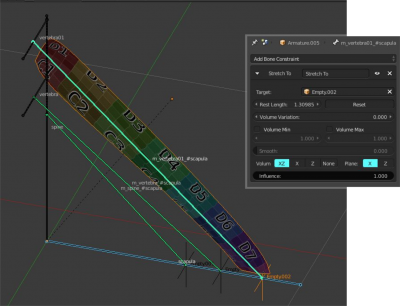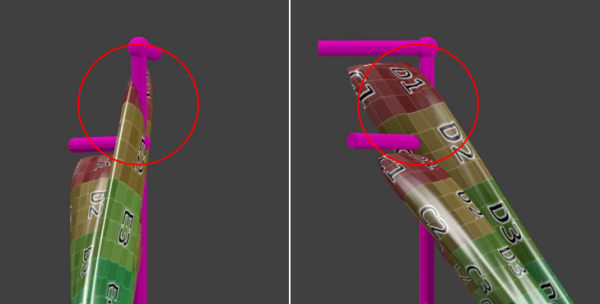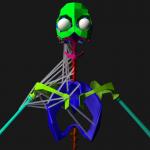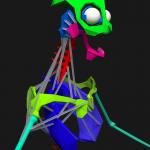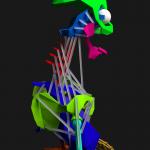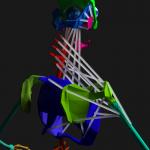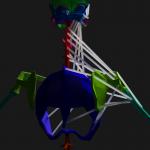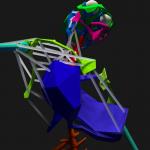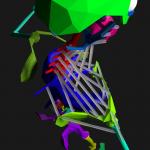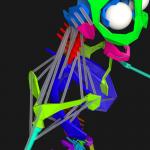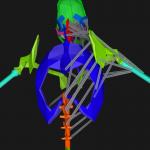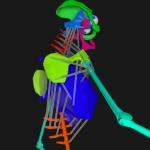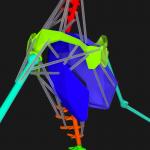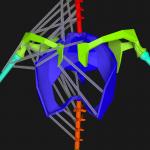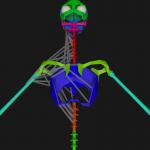Modelling:Muscles
Second layer of the tanukis, activating the bones: the muscles. It's a important part for the external shape of the avatar.
Contents
Rigging
To make sure my intuition was right, I've made a quick test of muscle animation using very simple armature:
- Each muscle is attached to 2 bones.
- Only one loop of vertices in the middle of the muscle.
Animation test:
Result is trashy.
Stretching the bone
In blender, bones can be constrained. One of the availabe constraints is Strecth to. Empties have to be attached to the target bone, at the anchor position on that bone. The test here contains:
- a spine - vertical bone
- 2 vertebras bones, perpendicular to spine
- 1 scapula - horizontal bone
Three extra bones have been created, one for each muscle. From bottom to top:
- m_spine_#scapula
- m_vertebra_#scapula
- m_vertebra01_#scapula
Each of the muscle bones is parented with the bone first bone mentionned in its name, and target the bone metionned after the #.
m_[parent bone]_#[target bone]
Some errors occurs in extreme bendings, but, generally, result is much better. A calculation has to be done at each frame. It is not standard in RT, so it will have to re-implemented in the game engine.
Curved muscles
For some articulations (wrist, knee, elbow, etc), muscles have to go around the bone "bubble" - see kenne study.
Rigging and skinning will be complex to do blindly. Therefore, it is important to find a way to verify the behaviour of the mesh in blender.
The video is a reminder.
Scapular structure
First try to place the muscles on the skeleton. Trying to place them to allow plausible motion without too much collision problem when they will be animated. It is only vectors to give the direction, the modelling will come later.
The muscles for now are
- puller only, not piston;
- straights, meaning they can't touch and be deformed by muscles under
It is the right side only.
Humerus needs mesh adatptation to link large muscles, especially the one coming down from the scapula.
Resources
20161210-muscles-structure
Musculoskeletal Robot
